Figures & data
Figure 1 The distribution of circulating blood composition. (A) The distribution of circulating blood composition at the time of diagnosis of advanced lung cancer. (B) The distribution of circulating blood composition at the time of diagnosis of lung cancer with leptomeningeal metastases.

Table 1 Characteristics of the 109 Lung Cancer Patients with Leptomeningeal Metastasis
Figure 2 Clinical features of patients. (A) The distribution of age when patient diagnosed as leptomeningeal metastases. (B) The distribution of common metastatic sites. (C) The time from the initiation of metastases to the involvement of leptomeningeal metastases (Time 2) was related positively to the time from the onset of lung cancer to the metastases (Time 1), while negatively to the survival after leptomeningeal metastases.
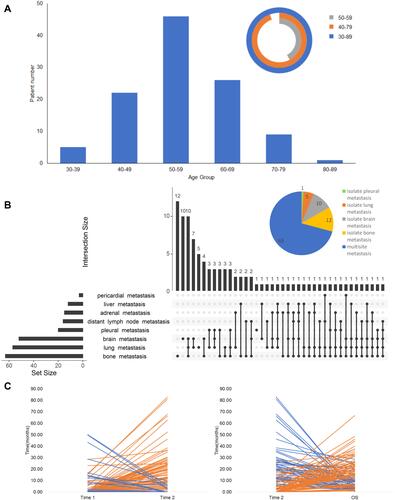
Figure 3 The comparison of genetic aberrations of 16 leptomeningeal metastases patients with EGFR mutation and 36 similar advanced lung cancer patients harboring EGFR mutation without leptomeningeal metastases.
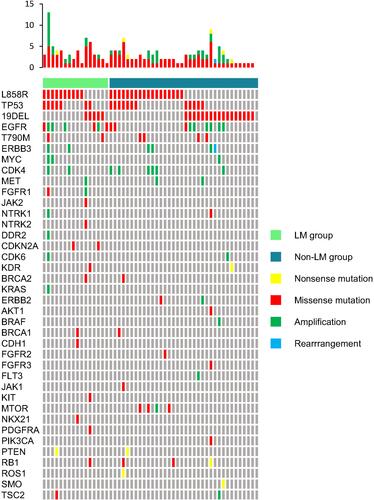
Figure 4 Summary of patients’ survival and the association between survival and clinical features including gender, age, smoking, PS, pathology, EGFR, NLR, and SDLL.
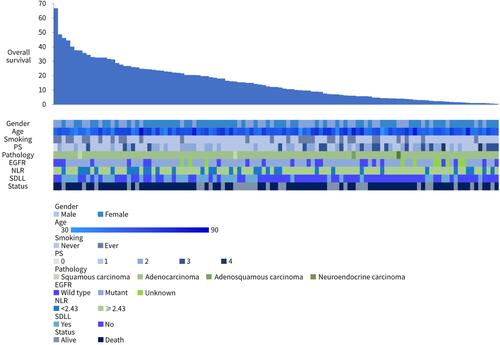
Figure 5 The forest plot for cox univariate analysis. In univariate analysis, NLR, PLR, MLR, PS, DLNM, and SDLL were significantly associated with overall survival.
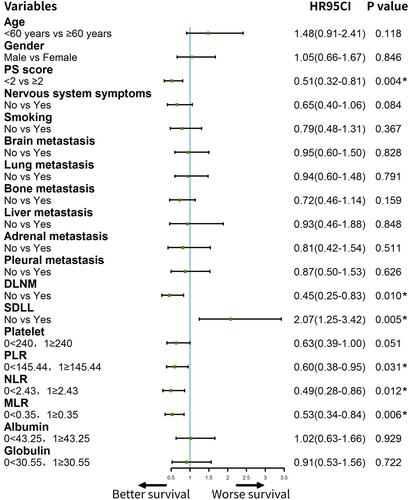
Figure 6 The independent prognostic factors and nomogram model for leptomeningeal metastasis. (A) Multivariate analysis showed NLR together with PS, DLNM, and SDLL were independent survival factor for leptomeningeal metastasis. (B) Establishment of a nomogram to predict the likelihood of 1-, 2- and 3-year survival. To use the nomogram, the value attributed to an individual patient is located on each variable axis, and a line is drawn upwards to determine the number of points received for each variable value. The sum of these numbers is located on the total points axis, and a line is drawn downward to the survival axis to determine the likelihood of 1-, 2- and 3-year survival. The 0 and 1 values of SDLL represented yes and no, respectively. The 0 and 1 values of NLR represented < 240 and ≥ 240, respectively. The 0 and 1 values of DLNM represented no and yes, respectively. The 0 and 1 values of PS represented < 2 and ≥ 2, respectively. (C) the calibration curve for OS at 1-, 2- and 3-year.
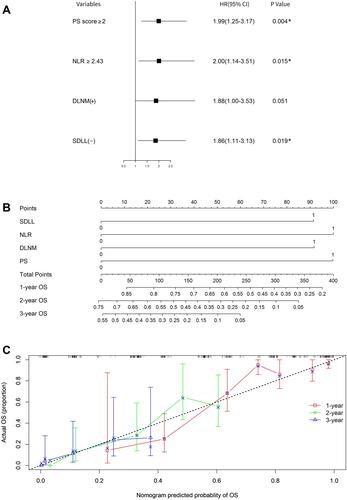
Figure 7 Summary of prognostic factors of leptomeningeal metastases in literature and this study.

